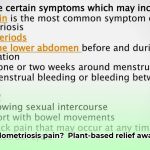Want to shed those extra pounds and feel amazing? Plant-based eating is getting a lot of buzz, and for good reason! This article isn’t just about inspirational before-and-after photos (though we’ve got those too!). We’ll dive into the science behind plant-based weight loss, showing you why it works and giving you the practical tools to make it happen. We’ll explore different types of plant-based diets, help you plan your meals, and tackle common hurdles so you can stick with it for the long haul. For a structured plan, check out this 30-day meal plan. Get ready to learn how to lose weight, feel healthier, and enjoy delicious, plant-powered meals along the way!
Plant Based Diet Before and After: Your Journey to a Healthier You
Ready to see how a plant-based diet can transform your life? Let’s explore the real-life stories and the science behind the amazing before-and-after results. We’ll show you exactly how to make this lifestyle change work for you and achieve sustainable weight management.
Real-Life Transformations: Seeing is Believing
You’ve probably seen those inspiring “before and after” photos online – people radiating health and vitality after switching to a plant-based diet. Weight loss is a frequent outcome, but many also report increased energy, better sleep, and fewer digestive problems. These success stories are truly motivating. However, it’s important to remember that each person’s journey is unique. Many factors, including exercise, stress levels, and genetics, all play a role in their overall results. While these personal accounts are inspiring, they don’t represent everyone’s experience. Remember that individual results can significantly vary.
The Science Behind Plant-Based Weight Loss: What the Research Says
A growing body of scientific research backs up the anecdotal evidence. Studies suggest that plant-based diets are often very effective for weight loss, sometimes even more so than other popular diets. The high fiber content in fruits, vegetables, and whole grains helps you feel full for longer, naturally curbing your appetite and reducing overall calorie intake. Many studies show a correlation between plant-based eating and lower BMIs (Body Mass Index). That said, the research landscape is still evolving. Many studies are relatively small, and longer-term studies with larger participant numbers are needed to draw definitive conclusions. Scientists are actively working on these areas, so our understanding might evolve as more data becomes available.
Exploring Different Plant-Based Paths: Finding Your Fit
The world of plant-based eating is surprisingly diverse! You’ll find various approaches, each with its own set of benefits and considerations. Let’s break down some of the most common types:
- Whole-food, plant-based (WFPB): This approach focuses on minimally processed fruits, vegetables, legumes, whole grains, and nuts. Think natural, unrefined foods, a diet rich in complex carbohydrates.
- Vegan: This is a stricter approach that excludes all animal products – meat, poultry, fish, dairy, eggs, and honey. It requires careful attention to potential nutrient deficiencies.
- Vegetarian: Vegetarians avoid meat but may include dairy, eggs, and other animal products in their diet. There’s a wide range of vegetarian approaches.
- Raw Vegan: This is an extreme version where all foods are consumed uncooked. It’s generally not recommended without expert guidance due to potential nutrient deficiencies.
Choosing the right path depends on your personal preferences and health goals. There’s no single “right” way – the most important thing is finding an approach that’s sustainable and enjoyable for you.
Your Step-by-Step Guide to Plant-Based Success
Ready to embark on your own plant-based journey? Here’s a practical, step-by-step guide to help you navigate the transition:
Step 1: Partner with a Pro: Before making major dietary changes, talk to your doctor or a registered dietitian. They can help you create a personalized plan that addresses your specific needs and health history, ensuring a safe and effective transition.
Step 2: Ease into it: Don’t try to overhaul your entire diet overnight. Start by gradually incorporating more plant-based meals into your week. This gradual approach minimizes the potential for digestive upset and makes the overall change easier to manage.
Step 3: Embrace Whole Foods: Focus on filling your plate with nutrient-rich whole foods: colorful fruits and vegetables, legumes (beans, lentils), whole grains (brown rice, quinoa, oats), nuts, and seeds. These provide essential nutrients, fiber, and antioxidants for sustained energy and overall well-being.
Step 4: Nutrient Check: Plant-based diets can sometimes be lower in certain nutrients like vitamin B12, iron, and omega-3 fatty acids. Your healthcare provider can help determine if you need supplementation or suggest specific foods to include to cover these bases. For example, B12-fortified plant milks or nutritional yeast are good sources of B12.
Step 5: Meal Prep Magic: Planning and preparing your meals ahead of time is essential for success, reducing the temptation to reach for less healthy options when you’re short on time. Explore plant-based cookbooks, websites, and apps for meal inspiration.
Step 6: Hydration is Key: Drinking plenty of water is crucial for overall health, aiding digestion and boosting your metabolism. Aim for at least eight glasses of water a day.
Step 7: Build Your Support Network: Enlist friends, family, or even online communities for support and motivation. Sharing your journey with others can make a big difference when transitioning to a new diet.
Step 8: Patience and Persistence: Remember that meaningful changes take time. Don’t get discouraged if you don’t see immediate results. Consistency is key, and the long-term rewards are well worth the effort, promoting long-term weight management.
Addressing Potential Challenges: Navigating the Roadbumps
While a plant-based lifestyle offers many benefits, some people experience challenges along the way. Let’s address some common hurdles and potential solutions.
| Challenge | Potential Solutions |
|---|---|
| Nutrient Deficiencies | Work with a registered dietitian; explore supplements (under professional guidance); incorporate nutrient-rich foods strategically. |
| Social Situations | Plan ahead; bring your own dish to social gatherings; gently educate friends and family about your dietary choices. |
| Cravings | Identify underlying emotional triggers for cravings; find healthier alternatives; practice mindful eating. |
| Digestive Issues | Increase fiber intake gradually; stay well-hydrated; consider incorporating probiotics (foods or supplements). |
| Feeling overwhelmed or stressed | Break down the transition into smaller, manageable steps; focus on one change at a time; seek support from others. |
Remember, embarking on a plant-based diet is a personalized journey. Listen to your body, adapt as needed, and celebrate your progress. The potential benefits for your health and well-being are substantial, but remember that individual results can vary significantly. Enjoy the process and the benefits of a healthier lifestyle.
How to Maintain Plant-Based Weight Loss Long-Term
Key Takeaways:
- Plant-based diets offer significant weight loss potential due to lower calorie density and increased satiety.
- Success depends on choosing whole, unprocessed foods and avoiding highly processed plant-based alternatives that can hinder progress.
- How to Maintain Plant-Based Weight Loss Long-Term involves mindful eating, lifestyle changes, and addressing potential challenges as they arise.
- Individualized approaches to nutrient intake and dietary adjustments are crucial for sustained results.
- Long-term success necessitates making plant-based eating a sustainable lifestyle, prioritizing overall well-being.
Inspiring Transformations: Real-Life Success Stories
Let’s be honest, seeing is believing. Before-and-after photos often ignite our motivation to embrace positive change. But remember, every journey is unique with varying genetic and lifestyle factors influencing outcomes. These success stories highlight possibilities, not guarantees. Consider them inspiration, not a rigid blueprint for success in plant-based weight management.
- Doug: After a heart attack, Doug adopted a whole foods plant-based diet and got off all medications, lost 55lbs, and ran his second half-marathon at age 58. Initially, he was advised to eat lean meats and eggs by his cardiologist but found greater success through plant-based eating after researching Dr. Caldwell Esselstyn’s work.
- Kate: Suffering from type 2 diabetes and severe heart failure, Kate was on a lung-transplant list. Inspired by seeing someone on TV explain how a whole foods plant-based diet changed their life, she tried it, contacted Dr. Caldwell Esselstyn, and attended a 5-day program. Her eyesight was fully restored, she got off the lung-transplant monitoring list and diabetic medications, lost over 110 lbs, and only needed oxygen at night.
- Dick: Diagnosed with prostate cancer, Dick followed a doctor-supervised lifestyle intervention program involving diet, exercise, and stress management. He doubled down on his lifestyle changes, lost over 30 pounds, and his PSA levels stabilized, leading to remission within two years.
- Emily: Diagnosed with rheumatoid arthritis and depression, Emily healed her body by eating a whole foods plant-based diet and weaned herself off medication. Her next blood work came back normal with only slight inflammation.
- Tara:
- Plant Based Diet Breast Cancer: Research-Based Benefits - December 16, 2025
- Plant-Based Diet Ulcerative Colitis Remission: Proven Benefits - December 15, 2025
- Plant-Based Diet and Fibroids: Reduce Symptoms Now - December 13, 2025










